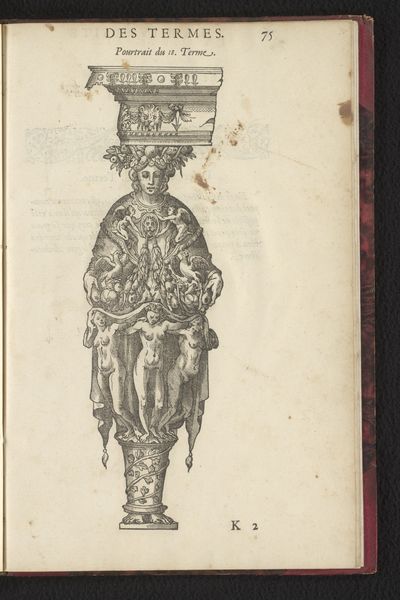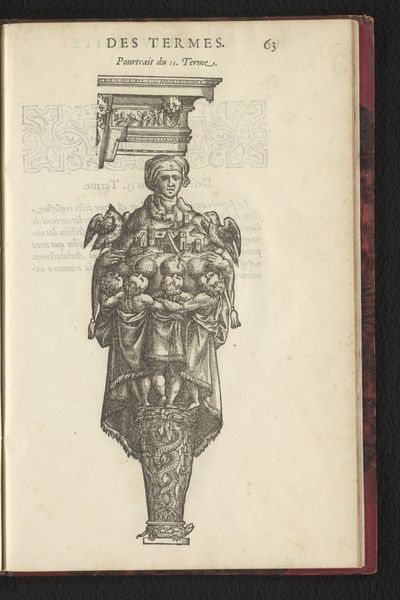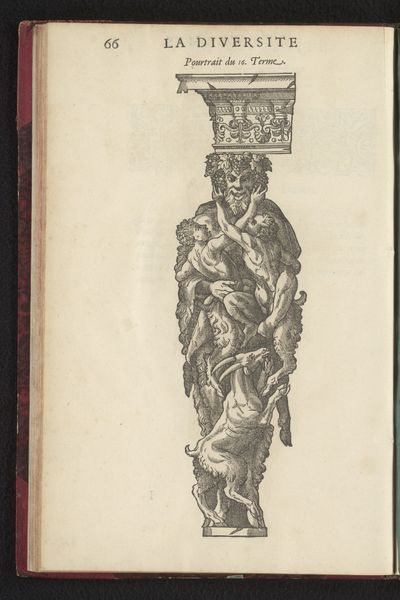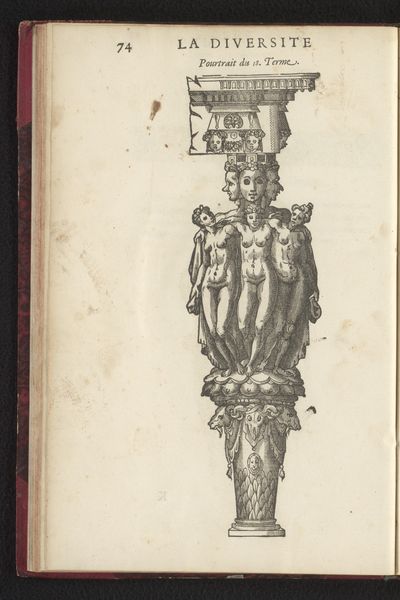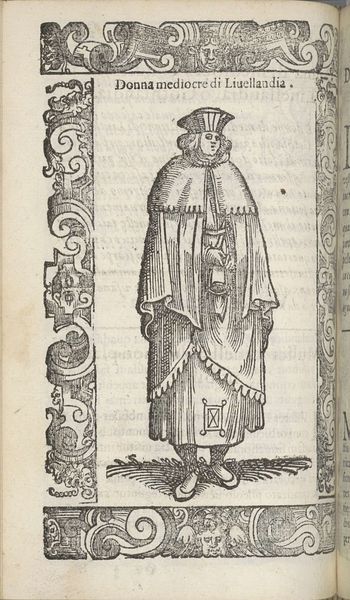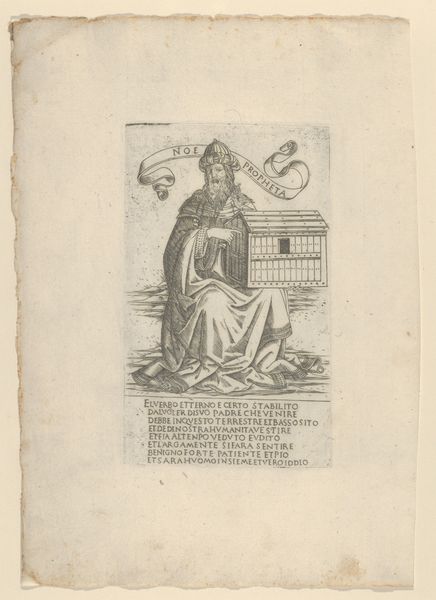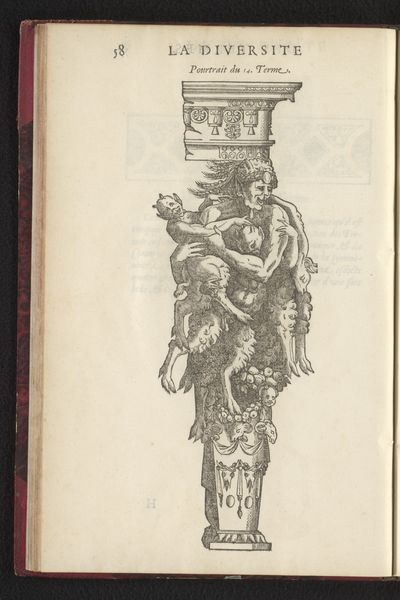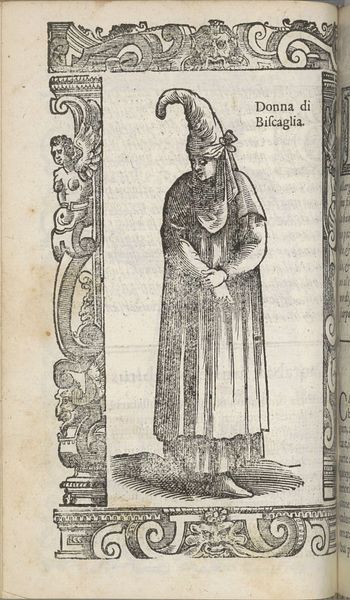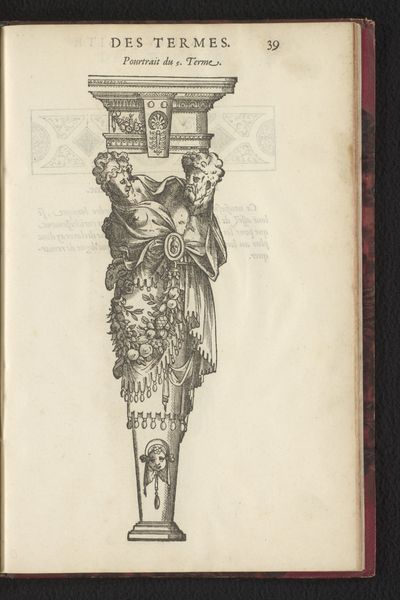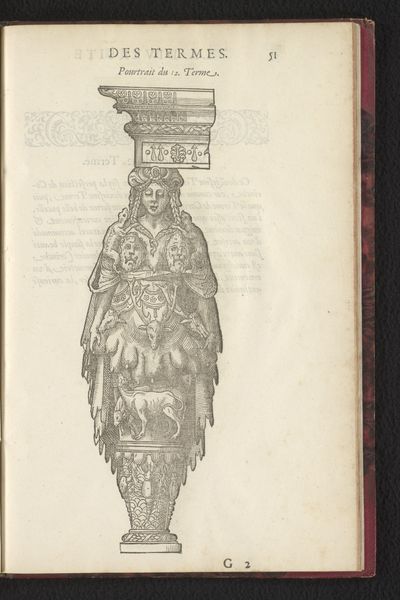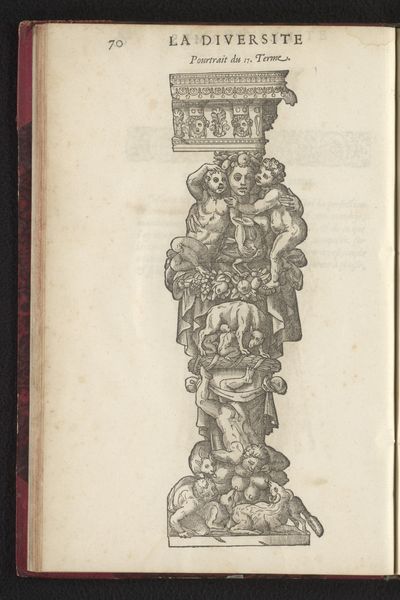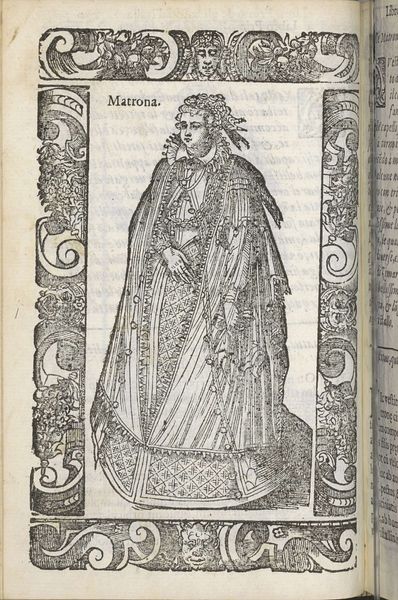
#
aged paper
#
toned paper
#
old engraving style
#
sketch book
#
personal sketchbook
#
ink colored
#
pen and pencil
#
pen work
#
sketchbook drawing
#
sketchbook art
Dimensions: height 308 mm, width 201 mm
Copyright: Rijks Museum: Open Domain
Curator: This is an engraving from 1572 entitled "Term met drie kinderen," or "Statue with Three Children" in English. The artist is anonymous. Editor: It has that mysterious, slightly unsettling vibe of old anatomical drawings. Sort of stiff, but you can tell the artist was really trying to capture the essence of, well, a slightly monstrous monument! Curator: "Monstrous" is a strong word, but these types of engravings often served as documentation of classical antiquity for Renaissance audiences. Think of them as a kind of early photography, circulating visual knowledge. We see it as “old engraving style,” but to a 16th-century viewer, the engraving might feel much more contemporary and fresh. Editor: True. I’m reacting more to the central figure. This serene woman holding... three chubby children? Is she some sort of fertility goddess? And the column she is standing on—there are a few animals sculpted at the foot of it, maybe dogs, maybe weasels! They seem to stare, maybe mock the whole setting. It seems oddly humorous, actually, when you see her static position compared with the wriggling babies. Curator: Precisely. The "Term" would have been a type of boundary marker, a sculptural element often incorporating a deity, phallic symbol, or other emblems of power and protection. This image comes from a time of massive fascination with ancient Rome. This particular representation of "Term" speaks volumes about Renaissance interpretations of antiquity, and how they creatively re-imagined classical forms and their purposes in society. Also, these kind of books had a central role for sharing cultural and architectural heritage across Europe at that moment. Editor: It’s incredible to think that someone sat down and meticulously rendered every line, every shadow by hand. The precision, given the primitive means and tools, shows a devotion—whether they adored Roman culture, I could not tell, but their love to their art is patent. Curator: Absolutely. What might strike us as archaic or somewhat stiff was likely admired for its meticulousness and the fidelity it sought to achieve in replicating antique sculptures and architecture. So it also demonstrates social ambition and maybe artistic prowess from an anonymous name lost through the passage of centuries. Editor: Exactly. It’s a reminder that art isn't just about individual expression. It is also shaped by the social and historical lenses of its moment, that it echoes like an old roman Term… Curator: A beautiful way to express it. Editor: It speaks volumes for me, but it will hopefully speak to our audience too.
Comments
No comments
Be the first to comment and join the conversation on the ultimate creative platform.
